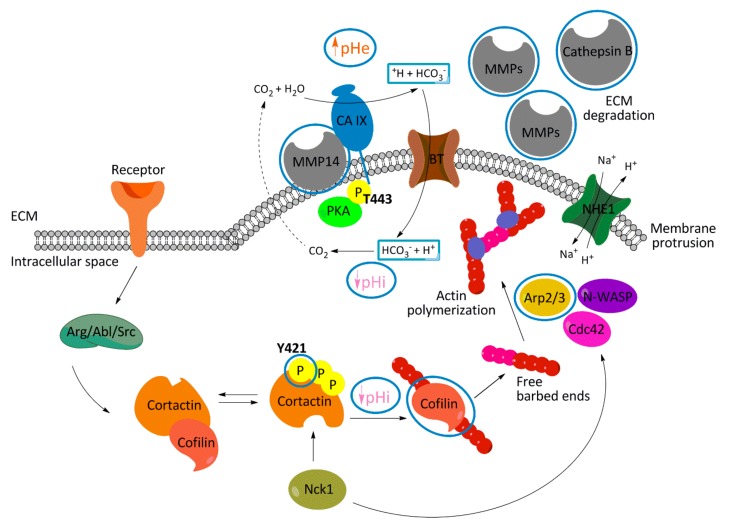Figure 7.
Hypothetical model depicting the consequences of downregulation of CAIX expression (denoted by blue circles) on mechanisms that modulate processes required for the invadopodia development. Acidic extracellular pH is indispensable for invadopodia formation, proteolytic cleavage of extracellular matrix and cancer cell invasion. Enzymatic activity of CAIX regulated by protein kinase A (PKA) generates acidic pHe nanodomains promoting the activity of MMPs. The functional cooperation between CAIX and bicarbonate transporters (NBCe1) in invadopodia locally increases pHi and releases pH-dependent cortactin-cofilin binding to promote actin-free barbed end formation. When CAIX is depleted, extracellular pH increases, intracellular pH becomes less alkaline, phosphorylation of Y421-cortactin is reduced, and Arp2 expression is lowered. These CAIX-related changes attenuate invadopodia formation and actin polymerization. Altogether, CAIX-mediated pH regulation as well as CAIX expression enhances proteolytic activity in invadopodia and affects actin-regulating proteins essential for invadopodia elongation.

